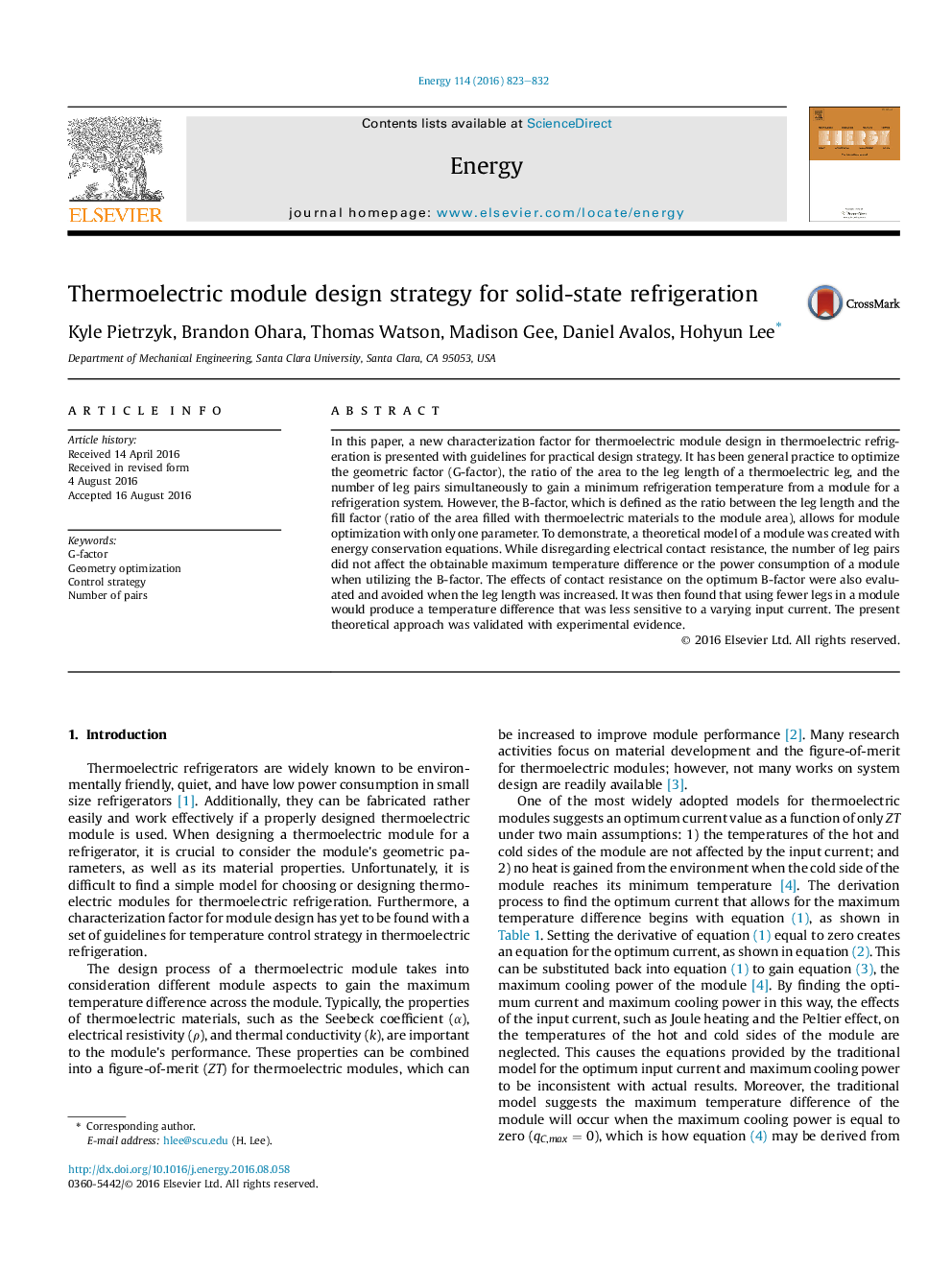| Article ID | Journal | Published Year | Pages | File Type |
|---|---|---|---|---|
| 8072889 | Energy | 2016 | 10 Pages |
Abstract
In this paper, a new characterization factor for thermoelectric module design in thermoelectric refrigeration is presented with guidelines for practical design strategy. It has been general practice to optimize the geometric factor (G-factor), the ratio of the area to the leg length of a thermoelectric leg, and the number of leg pairs simultaneously to gain a minimum refrigeration temperature from a module for a refrigeration system. However, the B-factor, which is defined as the ratio between the leg length and the fill factor (ratio of the area filled with thermoelectric materials to the module area), allows for module optimization with only one parameter. To demonstrate, a theoretical model of a module was created with energy conservation equations. While disregarding electrical contact resistance, the number of leg pairs did not affect the obtainable maximum temperature difference or the power consumption of a module when utilizing the B-factor. The effects of contact resistance on the optimum B-factor were also evaluated and avoided when the leg length was increased. It was then found that using fewer legs in a module would produce a temperature difference that was less sensitive to a varying input current. The present theoretical approach was validated with experimental evidence.
Related Topics
Physical Sciences and Engineering
Energy
Energy (General)
Authors
Kyle Pietrzyk, Brandon Ohara, Thomas Watson, Madison Gee, Daniel Avalos, Hohyun Lee,
